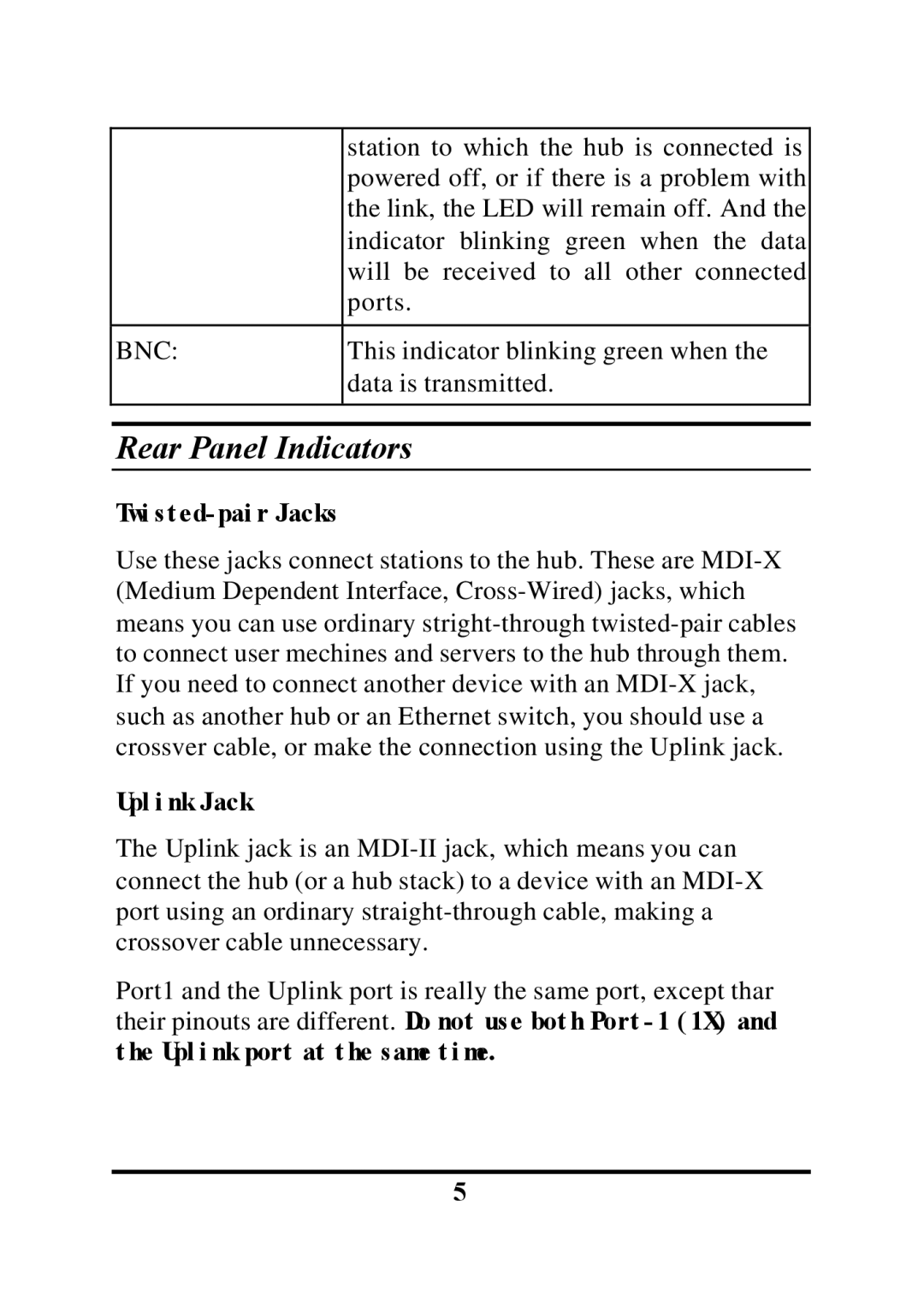ETHERNET HUB specifications
The Palm Ethernet Hub is an essential networking device that plays a significant role in local area networks (LANs) by enabling multiple devices to connect and communicate over a single network. This technology is particularly relevant for small to medium-sized business environments and home networks, where efficient data transfer is crucial.One of the main features of the Palm Ethernet Hub is its ability to connect multiple Ethernet devices such as computers, printers, and servers using standard Ethernet cables. This device operates on the principle of broadcasting data packets to all connected ports, allowing devices on the same network to communicate effectively.
The Palm Ethernet Hub typically supports various speeds, including 10BASE-T and 100BASE-TX, which correspond to data rates of 10 Mbps and 100 Mbps, respectively. This versatility allows users to select a hub model that best fits their network speed requirements.
In terms of technology, the Palm Ethernet Hub utilizes the Carrier Sense Multiple Access with Collision Detection (CSMA/CD) protocol. This protocol helps manage access to the shared network medium and ensures smooth data transmission. When a device wants to transmit data, it first listens to the network for any ongoing transmissions. If the medium is clear, it sends the data. If a collision occurs, the devices involved will wait for a random time before attempting to retransmit, thereby minimizing data loss.
Another characteristic of the Palm Ethernet Hub is its plug-and-play capability, making it user-friendly and easy to set up. Users can connect devices without needing complex configurations or specialized knowledge, which is particularly advantageous for those with limited technical expertise.
Moreover, the Palm Ethernet Hub often includes LED indicators that provide real-time feedback on power status, connection speed, and data transmission activity. This feature aids in troubleshooting and monitoring network performance.
In summary, the Palm Ethernet Hub is a vital component for building robust local area networks. Its ability to facilitate communication between multiple devices, support various speeds, utilize efficient data transmission protocols, and offer user-friendly installation makes it a valuable asset for both businesses and home users looking to create reliable and efficient networking solutions.

